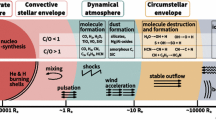Abstract
Population synthesis is used to model the number of neutron stars in globular clusters that are observed as low-mass X-ray sources and millisecond radio pulsars. The dynamical interactions between binary and single stars in a cluster are assumed to take place only with a continuously replenished “background” of single stars whose properties keep track of the variations in parameters of the cluster as a whole and the evolution of single stars. We use the hypothesis that the neutron stars forming in binary systems from components with initial masses of ∼8–12 M ⊙ during the collapse of degenerate O-Ne-Mg cores through electron captures do not acquire a high space velocity. The remaining neutron stars (from single stars with masses >8 M ⊙ or from binary components with masses >12 M ⊙) are assumed to be born with high space velocities. According to this hypothesis, a sizeable fraction of the forming neutron stars remain in globular clusters (about 1000 stars in a cluster with a mass of 5 × 105 M ⊙). The number of millisecond radio pulsars forming in such a cluster in the case of accretion-driven spinup in binary systems is found to be ∼10, in agreement with observations. Our modeling also reproduces the observed shape of the X-ray luminosity function for accreting neutron stars in binary systems with normal and degenerate components and the distribution of spin periods for millisecond pulsars.
Similar content being viewed by others
References
C. D. Bailyn and J. E. Grindlay, Astrophys. J. 353, 159 (1990).
D. Bhattacharya and E. P. J. van den Heuvel, Phys. Rep. 203, 1 (1991).
G. S. Bisnovatyi-Kogan, Usp. Fiz. Nauk 176, 59 (2006).
G. S. Bisnovatyi-Kogan and B. V. Komberg, Astron. Zh. 51, 373 (1974) [Sov. Astron. 18, 217 (1974)].
G. S. Bisnovatyi-Kogan and A. V. Tutukov, Astron. Zh. 81, 797 (2004) [Astron. Rep. 48, 724 (2004)].
S. Bogdanov, J. E. Grindlay, and M. van den Berg, Astrophys. J. 630, 1029 (2005).
F. Camillo and F. A. Rasio, Binary Radio Pulsars, Ed. by F. Rasio and I. H. Stairs, Astron. Soc. Pac. Conf. Ser., p. 328 (2005); astro-ph/0501226.
E. M. Caskett, R. Wijnands, C. O. Heinke, et al., Mon. Not. R. Astron. Soc. (in press); astro-ph/0512168.
J. D. M. Dewi, Ph. Podsiadlowski, and O. R. Pols, Mon. Not. R. Astron. Soc. 363, 71 (2005).
N. V. Dunina-Barkovskaya, V. S. Imshennik, and S. I. Blinnikov, Pis’ma Astron. Zh. 27, 412 (2001) [Astron. Lett. 27, 353 (2001)].
G. Fabbiano, Ann. Rev. Astron. Astrophys. (in press); astro-ph/0511481.
J. M. Fregeau, M. A. Gurkan, and F. A. Rasio, astro-ph/0512032 (2005).
M. R. Gilfanov, Mon. Not. R. Astron. Soc. 349, 146 (2004).
J. E. Grindlay, Binary Radio Pulsars, Ed. by F. Rasio and I. H. Stairs, Astron. Soc. Pac. Conf. Ser., p. 328 (2005); astro-ph/0412670.
J. E. Grindlay and C. D. Bailyn, Nature 336, 48 (1988).
J. E. Grindlay, S. Portegies Zwart, and S. McMillan, Nature (in press); astro-ph/0512654.
C. O. Heinke, J. E. Grindlay, P. D. Edmonds, et al., Astrophys. J. 625, 796 (2005).
D. J. Helfand, M. A. Ruderman, and J. Shaham, Nature 304, 423 (1983).
G. Hobbs, D. R. Lorimer, A. G. Lyne, and M. Kramer, Mon. Not. R. Astron. Soc. 360, 974 (2005).
I. Iben, Jr. and A. V. Tutukov, Astrophys. J. 456, 738 (1996).
N. Ivanova, K. Belczynski, J. M. Fregeau, and F. Rasio, Mon. Not. R. Astron. Soc. 358, 572 (2005).
S. S. Kim, H. M. Lee, and J. Goodman, Astrophys. J. 495, 786 (1998).
F. S. Kitaura, H.-Th. Janka, and W. Hillebrandt, Astron. Astrophys. (in press); astro-ph/0512065.
A. G. Kuranov and K. A. Postnov, Pis’ma Astron. Zh. 30, 164 (2004) [Astron. Lett. 30, 140 (2004)].
D. Lai, Physics of Neutron Star Interiors, Ed. by D. Blaschke, N. K. Glendenning, and A. Sedrakian (Springer, 2001), Lect. Notes Phys. 578, 424 (2001).
V. M. Lipunov and K. A. Postnov, Astrophys. Space Sci. 106, 103 (1984).
V. M. Lipunov, K. A. Postnov, and M. E. Prokhorov, Astrophys. Space Sci. Rev. 9, 1 (1996).
D. Lorimer, Liv. Rev. Rel. 8, 7 (2005); astro-ph/0511258.
R. W. Michie, Mon. Not. R. Astron. Soc. 125, 127 (1963).
S. Miyaji, K. Nomoto, K. Yokoi, and D. Sugimoto, Publ. Astron. Soc. Jpn. 32, 303 (1980).
H. Mouri and Y. Taniguchi, Astrophys. J. 580, 844 (2002).
E. Pfahl, S. Rappaport, and Ph. Podsiadlowski, Astrophys. J. 573, 283 (2002).
Ph. Podsiadlowski, J. D. M. Dewi, P. Lesaffre, et al., Mon. Not. R. Astron. Soc. 361, 1243 (2005).
Ph. Podsiadlowski, N. Langer, A. J. T. Poelarends, et al., Astrophys. J. 612, 1044 (2004).
O. Pols, K.-P. Schroeder, J. R. Hurley, et al., Mon. Not. R. Astron. Soc. 298, 525 (1998).
D. Pooley, W. H. G. Lewin, S. F. Anderson, et al., Astrophys. J. 591, 131 (2003).
K. A. Postnov and A. G. Kuranov, Pis’ma Astron. Zh. 31, 10 (2005) [Astron. Lett. 31, 7 (2005)].
C. Ritossa, E. Carcia-Berro, and I. Iben, Jr., Astrophys. J. 515, 381 (1999).
L. Spitzer, Astrophys. J. 158, 139 (1969).
A. V. Tutukov, N. N. Chugai, and L. R. Yungelson, Pis’ma Astron. Zh. 10, 586 (1984) [Sov. Astron. Lett. 10, 244 (1984)].
E. P. J. van den Heuvel, J. Astrophys. Astron. 5, 209 (1984).
E. P. J. van den Heuvel, in Proceedings of the 5th INTEGRAL Workshop, Ed. by V. Schenfelder, G. Lichti, and C. Winkler, ESA SP-552 (2004), p. 185.
E. P. J. van den Heuvel, J. van Paradijs, and R. E. Taam, Nature 322, 153 (1986).
F. Verbunt and C. Bassa, Chin. J. Astron. Astrophys. 3, 225 (2004).
Author information
Authors and Affiliations
Additional information
Original Russian Text © A.G. Kuranov, K.A. Postnov, 2006, published in Pis’ma v Astronomicheskiĭ Zhurnal, 2006, Vol. 32, No. 6, pp. 438–451.
Rights and permissions
About this article
Cite this article
Kuranov, A.G., Postnov, K.A. Neutron stars in globular clusters: Formation and observational manifestations. Astron. Lett. 32, 393–405 (2006). https://doi.org/10.1134/S106377370606003X
Received:
Issue Date:
DOI: https://doi.org/10.1134/S106377370606003X




